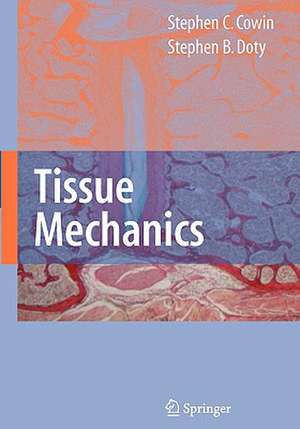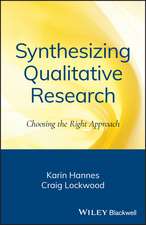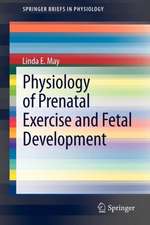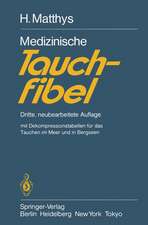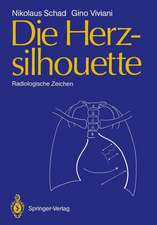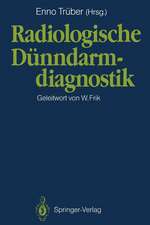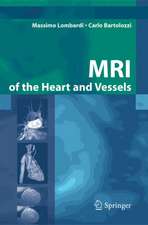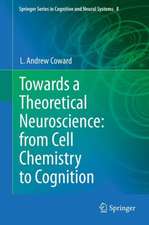Tissue Mechanics
Autor Stephen C. Cowin, Stephen B. Dotyen Limba Engleză Paperback – 28 oct 2010
Organized as a textbook for the student needing to acquire the core competencies, Tissue Mechanics will meet the demands of advanced undergraduate or graduate coursework in Biomedical Engineering, as well as, Chemical, Civil, and Mechanical Engineering.
Key features:
- Detailed Illustrations
- Example problems, including problems at the end of sections
- A separate solutions manual available for course instructors
- A website (http://tissue-mechanics.com/) that has been established to provide supplemental material for the book, including downloadable additional chapters on specific tissues, downloadable PowerPoint presentations of all the book's chapters, and additional exercises and examples for the existing chapters.
Stephen C. Cowin is a City University of New York Distinguished Professor, Departments of Biomedical and Mechanical Engineering, City College of the City University of New York and also an Adjunct Professor of Orthopaedics, at the Mt. Sinai School of Medicine in New York, New York. In 1985 he received the Society of Tulane Engineers and Lee H. Johnson Award for Teaching Excellence and a recipient of the European Society of Biomechanics Research Award in 1994. In 1999 he received the H. R. Lissner medal of the ASME for contributions to biomedical engineering. In 2004 he was elected to the National Academy of Engineering (NAE) and he also received the Maurice A. Biot medal of the American Society of Civil Engineers (ASCE).
Stephen B. Doty is a Senior Scientist at Hospital for Special Surgery, New York, New York and Adjunct Professor, School of Dental and Oral Surgery, Columbia University, New York, NY. He has over 100 publications in the field of anatomy, developmental biology, and the physiology of skeletal and connective tissues. His honors include several commendations for participation in the Russian/NASA spaceflights, the Spacelab Life Science NASA spaceflights, and numerous Shuttle missions that studied the influence of spaceflight on skeletal physiology. He presently is on the scientific advisory board of the National Space Biomedical Research Institute, Houston, Texas.
| Toate formatele și edițiile | Preț | Express |
|---|---|---|
| Paperback (1) | 678.87 lei 6-8 săpt. | |
| Springer – 28 oct 2010 | 678.87 lei 6-8 săpt. | |
| Hardback (1) | 748.22 lei 6-8 săpt. | |
| Springer – 24 oct 2006 | 748.22 lei 6-8 săpt. |
Preț: 678.87 lei
Preț vechi: 714.60 lei
-5% Nou
Puncte Express: 1018
Preț estimativ în valută:
130.02€ • 133.95$ • 108.91£
130.02€ • 133.95$ • 108.91£
Carte tipărită la comandă
Livrare economică 22 februarie-08 martie
Preluare comenzi: 021 569.72.76
Specificații
ISBN-13: 9781441922724
ISBN-10: 1441922725
Pagini: 700
Ilustrații: XVI, 682 p.
Dimensiuni: 178 x 254 x 37 mm
Greutate: 1.19 kg
Ediția:Softcover reprint of hardcover 1st ed. 2007
Editura: Springer
Colecția Springer
Locul publicării:New York, NY, United States
ISBN-10: 1441922725
Pagini: 700
Ilustrații: XVI, 682 p.
Dimensiuni: 178 x 254 x 37 mm
Greutate: 1.19 kg
Ediția:Softcover reprint of hardcover 1st ed. 2007
Editura: Springer
Colecția Springer
Locul publicării:New York, NY, United States
Public țintă
GraduateDescriere
I was delighted when I learned in the fall of 2005 that Steve Cowin was working on a textbook in biomechanics. Steve and I were in the same department at Tulane University in the 1970s, and under his influence I learned the beauty and power of continuum mechanics as a means to better understand the musculoskeletal system. When I began teaching courses in biomechanics during that decade, it was natural to teach the material from a continuum mechanics persp- tive. Over the years I have used a variety of continuum mechanics texts, but, for the most part, I have had to find the biomedical examples I used directly from the research literature. I have now had a chance to review a draft of Tissue Mechanics by Cowin and Doty, and it exceeds my high expectations. The material includes a rigorous and comprehensive introd- tion to continuum mechanics oriented toward biomechanics. Indeed, all of the foundation t- ics for continuum models of biological materials are covered. This material is illustrated through applications to the hard and soft tissues of the human body. Steve Cowin is now one of the leading researchers in the mechanics of bone, so one would expect the chapters on bone tissue and bone tissue adaptation to be of a very high order. But the presentation on collagen and cartilage mechanics is also excellent. Their presentation of finite deformation mechanics and its application to tendons and ligaments is one of the most accessible in the literature.
Cuprins
The Structure of Tissues.- Mechanical Modeling of Biological Structures.- Basic Continuum Kinematics.- Continuum Formulations of Conservation Laws.- Modeling Material Symmetry.- Formulation of Constitutive Equations.- Four Linear Continuum Theories.- Modeling Material Microstructure.- Poroelasticity.- Collagen.- Bone Tissue.- Bone Tissue Adaptation.- Modeling Poroelastic and Electrical Effects in Soft Tissues.- Cartilage.- Kinematics and Mechanics of Large Deformations.- Tendon and Ligament.
Recenzii
From the reviews:
"This is one of the few pioneering treatises on continuum biomechanics, which is a rapidly advancing field during the last two decades. Two well-known experts currently active in bone mechanics and bone surgery wrote the treatise. … the authors performed a valuable service to biomechanics community by the timely treatise, which is rigorously written and easy to read, and will be interest to graduate students and researchers, and certainly stimulate further research in the area of tissue mechanics." (M. Cengiz Dökmeci, Zentralblatt MATH, Vol. 1117 (19), 2007)
"The authors provide one of the most comprehensive treatments of the continuum biosolid mechanics of biological tissues available. … The book comprises enough material for a more advanced undergraduate course and a graduate course. … Tissue mechanics by Cowin and Doty is a valuable and highly recommended reference for any serious student of tissue biomechanics." (Andrew D. McCulloch, Mathematical Reviews, Issue 2008 d)
"This is one of the few pioneering treatises on continuum biomechanics, which is a rapidly advancing field during the last two decades. Two well-known experts currently active in bone mechanics and bone surgery wrote the treatise. … the authors performed a valuable service to biomechanics community by the timely treatise, which is rigorously written and easy to read, and will be interest to graduate students and researchers, and certainly stimulate further research in the area of tissue mechanics." (M. Cengiz Dökmeci, Zentralblatt MATH, Vol. 1117 (19), 2007)
"The authors provide one of the most comprehensive treatments of the continuum biosolid mechanics of biological tissues available. … The book comprises enough material for a more advanced undergraduate course and a graduate course. … Tissue mechanics by Cowin and Doty is a valuable and highly recommended reference for any serious student of tissue biomechanics." (Andrew D. McCulloch, Mathematical Reviews, Issue 2008 d)
Notă biografică
Professor Cowin received his BES and MS in Civil Engineering from Johns Hopkins University in 1956 and 1958, respectively, and his Ph.D. in Engineering Mechanics from the Pennsylvania State University in 1962. After one year on the faculty at the Pennsylvania State University, he began a 25-year-long association with Tulane University in 1963. His principal research interest is the mechanics of materials, particularly in determining the influence of microstructure on the gross mechanical behavior of granular, composite, and biological materials.
Professor Cowin has also been Professor-in-Charge of the Tulane/Newcomb Junior Year Abroad Program in Great Britain and Chairman of the Applied Mathematics Program at Tulane. In 1985 he received the Society of Tulane Engineers and Lee H. Johnson Award for Teaching Excellence. He was the recipient of the Best Paper Award from the Bioengineering Division of the American Society of Mechanical Engineers in 1992; a recipient of the Melville Medal from the American Society of Mechanical Engineers in 1993, and a recipient of the European Society of Biomechanics Research Award in 1994. In 1999 he receive the H. R. Lissner medal of the American Society of Mechanical Engineers for contributions to biomedical engineering. In 2004 he was elected to the National Academy of Engineering. In 2004 he also received the Maurice A. Biot medal of the American Society of Civil Engineers.
Professor Cowin is the author of over 200 research papers and editor or co-editor of five books. The edited books include both editions of the popular Bone Mechanics Handbook (CRC Press, 1989, 2001) and Cardiovascular Soft Tissue Mechanics (Kluwer, 2001). He is presently or has been Regional Editor for Forma, Associate Editor of the Journal of Applied Mechanics, the Journal of Biomechanical Engineering, and a member of the Editorial Board of the Journal of Biomechanics<, the International Journal of Biomechanics and Modeling in Mechanobiology, the Annals of Biomedical Engineering, and Mechanics Research Communications.
Dr. Doty attended undergraduate and graduate school at Rice University, Houston, Texas, and received his PhD in 1965, concentrating on physiology and biology. He was Assistant Professor at Johns Hopkins School of Medicine from 1965-1975, with one year at NIH on a Special Fellowship in Pathology at the National Cancer Institute. He then worked at the NIH Dental Institute for 3 years, studying the developmental patterns of bone and dental tissues. In 1978 he accepted a position at Columbia University School of Medicine and advanced to Associate Professor in Anatomy, with an appointment in the Orthopedic Surgery division. From 1989 he has been affiliated with Hospital for Special Surgery as a Senior Scientist and as the Director of the Analytical Microscopy Laboratory, a core facility.
Dr. Doty has over 100 publications in the field of anatomy, developmental biology, and the physiology of skeletal and connective tissues. His honors include several commendations for participation in the Russian/NASA spaceflights, the Spacelab Life Science NASA spaceflights, and numerous Shuttle missions that studied the influence of spaceflight on skeletal physiology. He presently is on the scientific advisory board of the National Space Biomedical Research Institute, Houston, Texas.
Dr. Doty attended undergraduate and graduate school at Rice University, Houston, Texas, and received his PhD in 1965, concentrating on physiology and biology. He was Assistant Professor at Johns Hopkins School of Medicine from 1965-1975, with one year at NIH on a Special Fellowship in Pathology at the National Cancer Institute. He then worked at the NIH Dental Institute for 3 years, studying the developmental patterns of bone and dental tissues. In 1978 he accepted a position at Columbia University School of Medicine and advanced to Associate Professor in Anatomy, with an appointment in the Orthopedic Surgery division. From 1989 he has been affiliated with Hospital for Special Surgery as a Senior Scientist and as the Director of the Analytical Microscopy Laboratory, a core facility.
Dr. Doty has over 100 publications in the field of anatomy, developmental biology, and the physiology of skeletal and connective tissues. His honors include several commendations for participation in the Russian/NASA spaceflights, the Spacelab Life Science NASA spaceflights, and numerous Shuttle missions that studied the influence of spaceflight on skeletal physiology. He presently is on the scientific advisory board of the National Space Biomedical Research Institute, Houston, Texas.
Dr. Doty attended undergraduate and graduate school at Rice University, Houston, Texas, and received his PhD in 1965, concentrating on physiology and biology. He was Assistant Professor at Johns Hopkins School of Medicine from 1965-1975, with one year at NIH on a Special Fellowship in Pathology at the National Cancer Institute. He then worked at the NIH Dental Institute for 3 years, studying the developmental patterns of bone and dental tissues. In 1978 he accepted a position at Columbia University School of Medicine and advanced to Associate Professor in Anatomy, with an appointment in the Orthopedic Surgery division. From 1989 he has been affiliated with Hospital for Special Surgery as a Senior Scientist and as the Director of the Analytical Microscopy Laboratory, a core facility.
Dr. Doty has over 100 publications in the field of anatomy, developmental biology, and the physiology of skeletal and connective tissues. His honors include several commendations for participation in the Russian/NASA spaceflights, the Spacelab Life Science NASA spaceflights, and numerous Shuttle missions that studied the influence of spaceflight on skeletal physiology. He presently is on the scientific advisory board of the National Space Biomedical Research Institute, Houston, Texas.
Dr. Doty attended undergraduate and graduate school at Rice University, Houston, Texas, and received his PhD in 1965, concentrating on physiology and biology. He was Assistant Professor at Johns Hopkins School of Medicine from 1965-1975, with one year at NIH on a Special Fellowship in Pathology at the National Cancer Institute. He then worked at the NIH Dental Institute for 3 years, studying the developmental patterns of bone and dental tissues. In 1978 he accepted a position at Columbia University School of Medicine and advanced to Associate Professor in Anatomy, with an appointment in the Orthopedic Surgery division. From 1989 he has been affiliated with Hospital for Special Surgery as a Senior Scientist and as the Director of the Analytical Microscopy Laboratory, a core facility.
Dr. Doty has over 100 publications in the field of anatomy, developmental biology, and the physiology of skeletal and connective tissues. His honors include several commendations for participation in the Russian/NASA spaceflights, the Spacelab Life Science NASA spaceflights, and numerous Shuttle missions that studied the influence of spaceflight on skeletal physiology. He presently is on the scientific advisory board of the National Space Biomedical Research Institute, Houston, Texas.
Professor Cowin has also been Professor-in-Charge of the Tulane/Newcomb Junior Year Abroad Program in Great Britain and Chairman of the Applied Mathematics Program at Tulane. In 1985 he received the Society of Tulane Engineers and Lee H. Johnson Award for Teaching Excellence. He was the recipient of the Best Paper Award from the Bioengineering Division of the American Society of Mechanical Engineers in 1992; a recipient of the Melville Medal from the American Society of Mechanical Engineers in 1993, and a recipient of the European Society of Biomechanics Research Award in 1994. In 1999 he receive the H. R. Lissner medal of the American Society of Mechanical Engineers for contributions to biomedical engineering. In 2004 he was elected to the National Academy of Engineering. In 2004 he also received the Maurice A. Biot medal of the American Society of Civil Engineers.
Professor Cowin is the author of over 200 research papers and editor or co-editor of five books. The edited books include both editions of the popular Bone Mechanics Handbook (CRC Press, 1989, 2001) and Cardiovascular Soft Tissue Mechanics (Kluwer, 2001). He is presently or has been Regional Editor for Forma, Associate Editor of the Journal of Applied Mechanics, the Journal of Biomechanical Engineering, and a member of the Editorial Board of the Journal of Biomechanics<, the International Journal of Biomechanics and Modeling in Mechanobiology, the Annals of Biomedical Engineering, and Mechanics Research Communications.
Dr. Doty attended undergraduate and graduate school at Rice University, Houston, Texas, and received his PhD in 1965, concentrating on physiology and biology. He was Assistant Professor at Johns Hopkins School of Medicine from 1965-1975, with one year at NIH on a Special Fellowship in Pathology at the National Cancer Institute. He then worked at the NIH Dental Institute for 3 years, studying the developmental patterns of bone and dental tissues. In 1978 he accepted a position at Columbia University School of Medicine and advanced to Associate Professor in Anatomy, with an appointment in the Orthopedic Surgery division. From 1989 he has been affiliated with Hospital for Special Surgery as a Senior Scientist and as the Director of the Analytical Microscopy Laboratory, a core facility.
Dr. Doty has over 100 publications in the field of anatomy, developmental biology, and the physiology of skeletal and connective tissues. His honors include several commendations for participation in the Russian/NASA spaceflights, the Spacelab Life Science NASA spaceflights, and numerous Shuttle missions that studied the influence of spaceflight on skeletal physiology. He presently is on the scientific advisory board of the National Space Biomedical Research Institute, Houston, Texas.
Dr. Doty attended undergraduate and graduate school at Rice University, Houston, Texas, and received his PhD in 1965, concentrating on physiology and biology. He was Assistant Professor at Johns Hopkins School of Medicine from 1965-1975, with one year at NIH on a Special Fellowship in Pathology at the National Cancer Institute. He then worked at the NIH Dental Institute for 3 years, studying the developmental patterns of bone and dental tissues. In 1978 he accepted a position at Columbia University School of Medicine and advanced to Associate Professor in Anatomy, with an appointment in the Orthopedic Surgery division. From 1989 he has been affiliated with Hospital for Special Surgery as a Senior Scientist and as the Director of the Analytical Microscopy Laboratory, a core facility.
Dr. Doty has over 100 publications in the field of anatomy, developmental biology, and the physiology of skeletal and connective tissues. His honors include several commendations for participation in the Russian/NASA spaceflights, the Spacelab Life Science NASA spaceflights, and numerous Shuttle missions that studied the influence of spaceflight on skeletal physiology. He presently is on the scientific advisory board of the National Space Biomedical Research Institute, Houston, Texas.
Dr. Doty attended undergraduate and graduate school at Rice University, Houston, Texas, and received his PhD in 1965, concentrating on physiology and biology. He was Assistant Professor at Johns Hopkins School of Medicine from 1965-1975, with one year at NIH on a Special Fellowship in Pathology at the National Cancer Institute. He then worked at the NIH Dental Institute for 3 years, studying the developmental patterns of bone and dental tissues. In 1978 he accepted a position at Columbia University School of Medicine and advanced to Associate Professor in Anatomy, with an appointment in the Orthopedic Surgery division. From 1989 he has been affiliated with Hospital for Special Surgery as a Senior Scientist and as the Director of the Analytical Microscopy Laboratory, a core facility.
Dr. Doty has over 100 publications in the field of anatomy, developmental biology, and the physiology of skeletal and connective tissues. His honors include several commendations for participation in the Russian/NASA spaceflights, the Spacelab Life Science NASA spaceflights, and numerous Shuttle missions that studied the influence of spaceflight on skeletal physiology. He presently is on the scientific advisory board of the National Space Biomedical Research Institute, Houston, Texas.
Dr. Doty attended undergraduate and graduate school at Rice University, Houston, Texas, and received his PhD in 1965, concentrating on physiology and biology. He was Assistant Professor at Johns Hopkins School of Medicine from 1965-1975, with one year at NIH on a Special Fellowship in Pathology at the National Cancer Institute. He then worked at the NIH Dental Institute for 3 years, studying the developmental patterns of bone and dental tissues. In 1978 he accepted a position at Columbia University School of Medicine and advanced to Associate Professor in Anatomy, with an appointment in the Orthopedic Surgery division. From 1989 he has been affiliated with Hospital for Special Surgery as a Senior Scientist and as the Director of the Analytical Microscopy Laboratory, a core facility.
Dr. Doty has over 100 publications in the field of anatomy, developmental biology, and the physiology of skeletal and connective tissues. His honors include several commendations for participation in the Russian/NASA spaceflights, the Spacelab Life Science NASA spaceflights, and numerous Shuttle missions that studied the influence of spaceflight on skeletal physiology. He presently is on the scientific advisory board of the National Space Biomedical Research Institute, Houston, Texas.
Textul de pe ultima copertă
Tissue Mechanics
Stephen C. Cowin and Stephen B. Doty
Tissue Mechanics, Second Edition is about the mechanics of tissues for use at the advanced undergraduate level or above. Tissues transmit mechanical loads just like bridges and building structures. Not only do they transmit loads, but also they adapt their own structures so that the structures will transmit the mechanical loads more effectively, unlike bridges and building structures. The structures of living tissues are continually changing due to growth and response to the tissue environment, including the mechanical environment. The objective of this text is to describe the nature of the composite components of a tissue, the cellular processes that produce these constituents, the assembly of the constituents into a hierarchical structure, and the behavior of the tissue’s composite structure in the adaptation to its mechanical environment. A tissue’s mechanical environment is the history of mechanical loading experienced by the tissue in some reference time period, like a day.
The most important features of the textbook are its middle level, neither too advanced nor too elementary, its fresh perspective on older material issues, and the inclusion of new research results carefully crafted onto this intermediate base of mechanics.
Key Features:
An introductory chapter on the structure of tissues and the fascinating unresolved problems concerning how biological tissues are formed and constructed.
Example problems to provide the student with hands-on experience with concepts
Extensive appendices and tutorial materials on new developments including expanded treatment of ceramic materials and implants
Detailed references for further reading
As in TM, 1E a website (http://tissue-mechanics.com/) that has been established to provide supplemental material for the book. On this website is posted downloadable additional chapters on specific tissues, downloadable PowerPoint presentations of all the book's chapters, corrections to the published volume and additional exercises and examples for the existing chapters.
About the Authors:
Stephen C. Cowin is a City University of New York Distinguished Professor, Departments of Biomedical and Mechanical Engineering, City College of the City University of New York and also an Adjunct Professor of Orthopaedics, at the Mt. Sinai School of Medicine in New York, New York. In 1985 he received the Society of Tulane Engineers and Lee H. Johnson Award for Teaching Excellence and a recipient of the European Society of Biomechanics Research Award in 1994. In 1999 he received the H. R. Lissner medal of the ASME for contributions to biomedical engineering. In 2004 he was elected to the National Academy of Engineering (NAE) and he also received the Maurice A. Biot medal of the American Society of Civil Engineers (ASCE).
Stephen B. Doty is a Senior Scientist at Hospital for Special Surgery, New York, New York and Adjunct Professor, School of Dental and Oral Surgery, Columbia University, New York, NY. He has over 100 publications in the field of anatomy, developmental biology, and the physiology of skeletal and connective tissues. His honors include several commendations for participation in the Russian/NASA spaceflights, the Spacelab Life Science NASA spaceflights, and numerous Shuttle missions that studied the influence of spaceflight on skeletal physiology. He presently is on the scientific advisory board of the National Space Biomedical Research Institute, Houston, Texas.
Stephen C. Cowin and Stephen B. Doty
Tissue Mechanics, Second Edition is about the mechanics of tissues for use at the advanced undergraduate level or above. Tissues transmit mechanical loads just like bridges and building structures. Not only do they transmit loads, but also they adapt their own structures so that the structures will transmit the mechanical loads more effectively, unlike bridges and building structures. The structures of living tissues are continually changing due to growth and response to the tissue environment, including the mechanical environment. The objective of this text is to describe the nature of the composite components of a tissue, the cellular processes that produce these constituents, the assembly of the constituents into a hierarchical structure, and the behavior of the tissue’s composite structure in the adaptation to its mechanical environment. A tissue’s mechanical environment is the history of mechanical loading experienced by the tissue in some reference time period, like a day.
The most important features of the textbook are its middle level, neither too advanced nor too elementary, its fresh perspective on older material issues, and the inclusion of new research results carefully crafted onto this intermediate base of mechanics.
Key Features:
An introductory chapter on the structure of tissues and the fascinating unresolved problems concerning how biological tissues are formed and constructed.
Example problems to provide the student with hands-on experience with concepts
Extensive appendices and tutorial materials on new developments including expanded treatment of ceramic materials and implants
Detailed references for further reading
As in TM, 1E a website (http://tissue-mechanics.com/) that has been established to provide supplemental material for the book. On this website is posted downloadable additional chapters on specific tissues, downloadable PowerPoint presentations of all the book's chapters, corrections to the published volume and additional exercises and examples for the existing chapters.
About the Authors:
Stephen C. Cowin is a City University of New York Distinguished Professor, Departments of Biomedical and Mechanical Engineering, City College of the City University of New York and also an Adjunct Professor of Orthopaedics, at the Mt. Sinai School of Medicine in New York, New York. In 1985 he received the Society of Tulane Engineers and Lee H. Johnson Award for Teaching Excellence and a recipient of the European Society of Biomechanics Research Award in 1994. In 1999 he received the H. R. Lissner medal of the ASME for contributions to biomedical engineering. In 2004 he was elected to the National Academy of Engineering (NAE) and he also received the Maurice A. Biot medal of the American Society of Civil Engineers (ASCE).
Stephen B. Doty is a Senior Scientist at Hospital for Special Surgery, New York, New York and Adjunct Professor, School of Dental and Oral Surgery, Columbia University, New York, NY. He has over 100 publications in the field of anatomy, developmental biology, and the physiology of skeletal and connective tissues. His honors include several commendations for participation in the Russian/NASA spaceflights, the Spacelab Life Science NASA spaceflights, and numerous Shuttle missions that studied the influence of spaceflight on skeletal physiology. He presently is on the scientific advisory board of the National Space Biomedical Research Institute, Houston, Texas.
Caracteristici
Request lecturer material: sn.pub/lecturer-material
